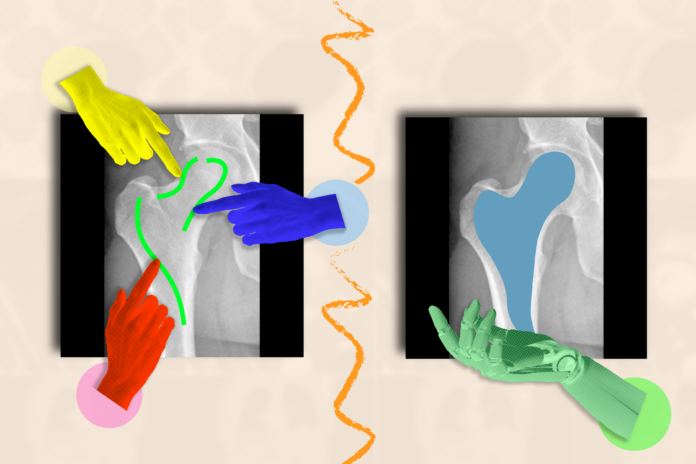In Short:
MIT researchers have developed a new algorithm called Co-LLM to enhance the accuracy of large language models (LLMs). By pairing a general-purpose LLM with a specialized model, Co-LLM helps generate better responses by identifying when to call on the expert model. This collaborative approach leads to more accurate answers in fields like medicine and math while improving efficiency by only activating the expert when needed.
Researchers at MIT’s Computer Science and Artificial Intelligence Laboratory (CSAIL) have introduced a novel algorithm named “Co-LLM,” aimed at enhancing the collaboration between large language models (LLMs). This new framework seeks to overcome the existing challenges in enabling LLMs to determine when they should seek assistance from more specialized models.
Algorithmic Collaboration
The Co-LLM algorithm is designed to pair a general-purpose base LLM with a more specialized model, facilitating effective cooperation during the response generation process. As the general-purpose model formulates an answer, Co-LLM meticulously analyzes each word or token in its output, identifying opportunities to incorporate more accurate information from the expert model. This methodology considerably improves the quality of responses in areas such as medical inquiries and complex mathematics, while also streamlining response generation by minimizing reliance on the expert model during every iteration.
Mechanism of Operation
Central to Co-LLM’s functionality is the “switch variable,” a machine learning tool that assesses the competence of each word generated by the models. This switch serves a critical role, similar to a project manager, determining when the base model should engage the expert model for input. For instance, in a scenario where Co-LLM is tasked with providing examples of extinct bear species, it allows both models to collaborate. The switch variable steps in to substitute parts of the answer with better tokens from the expert model, enriching the overall response.
“With Co-LLM, we’re essentially training a general-purpose LLM to ‘phone’ an expert model when needed,” remarks Shannon Shen, an MIT PhD student and lead author of a recent paper detailing the approach. “By utilizing domain-specific data, the base model can learn about the specialization of its counterpart in fields such as biomedical and mathematical tasks, facilitating a more dynamic collaborative environment.”
Flexibility and Accuracy
Co-LLM’s capability is particularly evident in contexts requiring precise information. For example, when a general-purpose LLM is asked to list the ingredients of a specific prescription drug, the potential for error is significant without the expert’s insights. The researchers demonstrated Co-LLM’s flexibility using BioASQ, a medical dataset, collaborating with expert models like Meditron, to address queries typically directed to biomedical professionals.
In one instance, Co-LLM improved accuracy in solving mathematical equations by facilitating collaboration with a math-focused LLM named Llemma. The general-purpose model, initially providing an incorrect solution, was able to arrive at the correct answer of 3,125 through this cooperative learning process.
Advantages Over Traditional Methods
Co-LLM outperformed fine-tuned simple LLMs and untuned specialized models working in isolation. Unlike other approaches, such as Proxy Tuning, which necessitate uniform training across all components, Co-LLM effectively orchestrates interaction between differently-trained models. This selective activation further enhances efficiency in generating responses.
Future Developments
The algorithm’s design is inspired by human collaborative behavior, suggesting that mimicking this dynamic may enhance the accuracy of multi-LLM interactions. Future enhancements may include a robust deferral mechanism allowing the model to backtrack when incorrect information is produced, ensuring reliable outputs. The researchers also plan to keep the expert models up-to-date through ongoing training of the base model, thereby aligning the system with the latest information and improving reasoning capabilities. This proactive approach could potentially allow Co-LLM to assist in maintaining enterprise documentation with accuracy.
“Co-LLM presents an interesting approach for learning to choose between two models to improve efficiency and performance,” states Colin Raffel, an associate professor at the University of Toronto, who was not involved in the study. “The token-level routing decisions made by Co-LLM introduce a granular method of leveraging a more adept model for challenging tasks, while offering flexibility that parallels other collaboration methods.”
Shen collaborated on the paper with four other CSAIL affiliates, including Hunter Lang, Bailin Wang, Yoon Kim, and David Sontag. Their research received support from the National Science Foundation, the National Defense Science and Engineering Graduate Fellowship, the MIT-IBM Watson AI Lab, and Amazon. The findings were presented at the Annual Meeting of the Association for Computational Linguistics.





